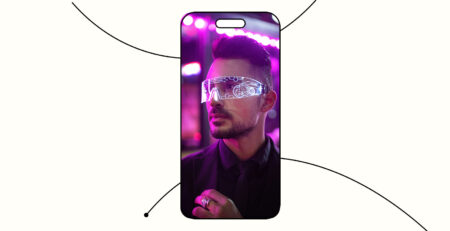Don’t sleep on the gaming industry boom (even if you’re not in the industry)
The gaming industry is thriving, with the global market set to hit $213.3 billion(!) by 2027.
So, what makes it so successful?
One thing that stands out is its diverse global audience of 3.75 billion gamers. The gaming community is tight-knit, and brands are learning to engage them by providing value rather than simply advertising to them.
This month, Helen Clow, Growth Director at Brainlabs, hosted a webinar to discuss how brands from all industries can learn from the gaming world’s approach to increasing audience engagement. Helen spoke to Haye Anderson from Ubisoft Mainz, James Day from Dovetail Games, and Rachael Grant from Big Fish Games to get their expert opinions on the subject.
Here’s what you need to know.
How brands should interact with their audience
Consumer habits are constantly evolving, and over the last few years, there’s been a noticeable shift in what customers want from brands. We’re seeing a deeper desire for authenticity, community, and reciprocity, and the gaming industry is leading these changes.
Let’s look at five strategies that the gaming industry has implemented and how they can work for any brand.
- Listen to build loyal communities
This may seem obvious, but brands need to actually listen to their audience rather than assuming what they want. Customers may like a brand’s product, but to develop communities, people need to feel included. Haye Anderson says, “Listening to your audience is such an easy way for them to feel seen, to incorporate them and be a part of the brand.”
Brands that actively engage with their audiences on platforms like TikTok or Discord can turn customers into advocates. We loved Bumble’s collab with Gen.G back in 2019, who launched their first all-female Fortnite team empowering women in gaming. They recognized the importance of promoting diversity in the industry and gave their audience what they wanted.
- Develop products with community in mind
Once brands have built their community, they need to keep them involved. It’s important to analyze feedback to decipher true needs from surface-level requests. The gaming industry does this the right way with feedback loops through comments, beta testing, or direct input that creates a sense of ownership and loyalty that drives deeper brand connections.
Gaming brands have long involved communities in product development, incorporating feedback early and often. Integrating audience voices into the creative process ensures the final product meets (and exceeds) expectations.
For other industries, this might look like running focus groups or collaborating with niche micro-communities. By involving audiences early, brands can co-create products with their communities and create more meaningful connections.
- Combine data with creativity
Influencer marketing is key to any brand’s strategy. By measuring qualitative insights like an influencer’s tone, and audience alignment against quantitative measures such as engagement rates, brands can assess what works best on all levels. Rachael Grant says. “The sweet spot is a mix of data and creativity, but it can be really hard to find that middle ground.”
Companies shouldn’t limit themselves to just their own sector. Brainlabs can help brands identify influencers who share an authentic connection with products across multiple niches. We helped Meta Quest VR to reach a wider audience by leveraging influencers outside gaming. They worked with artist and musician creators to challenge perceptions of what a gamer is, and demonstrate how VR connects to everyday life.
- Trust influencers to do what they do best
While many brands are hesitant to relinquish creative control, the best-performing influencer campaigns come from allowing creators to speak authentically to their audiences. Influencers know their audiences best – brands should trust them to create real and engaging content.
UGC is an excellent example of this. Brands have less control over user-generated content, but the impact is often greater and speaks to people on a more authentic level. James Day says, “UGC is essentially free advertising for brands. These creators can reach places that brands can’t, so it’s really important to harness, support, and share this type of content.”
Micro-influencers and niche creators often outperform larger influencers in driving engagement within tightly defined communities. And, if brands need help choosing creators that align with their values, that’s where we come in!
- Take risks to engage beyond sales
Obviously, sales are the aim of the game, but that’s not the only thing businesses should be achieving. Successful brands take creative risks to entertain and put themselves in the forefront of their audience’s minds.
In gaming, engagement often extends beyond gameplay to include fan art, cosplay, or UGC. Social media is a good way for brands to show their personalities, and they should create interactive spaces where audiences want to participate rather than just consume (remember the community building)! Haye Anderson says, “Communities don’t come to social media to be sold to – they’re here to engage and be entertained.”
Brainlabs partnered with Activision Blizzard to launch Diablo VI across multiple channels. Tastemaker content, like OOH murals and a customized rug of the character Lilith, showed the brand’s creativity and achieved high engagement levels.
Get involved
The gaming industry’s community-first approach is leading the way, and other sectors should take note and follow.
Regardless of industry, brands should listen to their audience, involve their community, and trust influencers to do their thing. The key to successful campaigns in 2025 is a blend of data, creativity, risk, and value to build strong connections with their audiences.
If you’re not sure how to implement these strategies into your marketing, don’t panic. At Brainlabs, we use our extensive expertise and proprietary tech tools to help brands achieve high-performance marketing and maximize their ROI. Get in touch to find out how – we’d love to chat.




